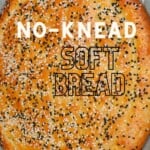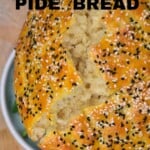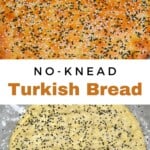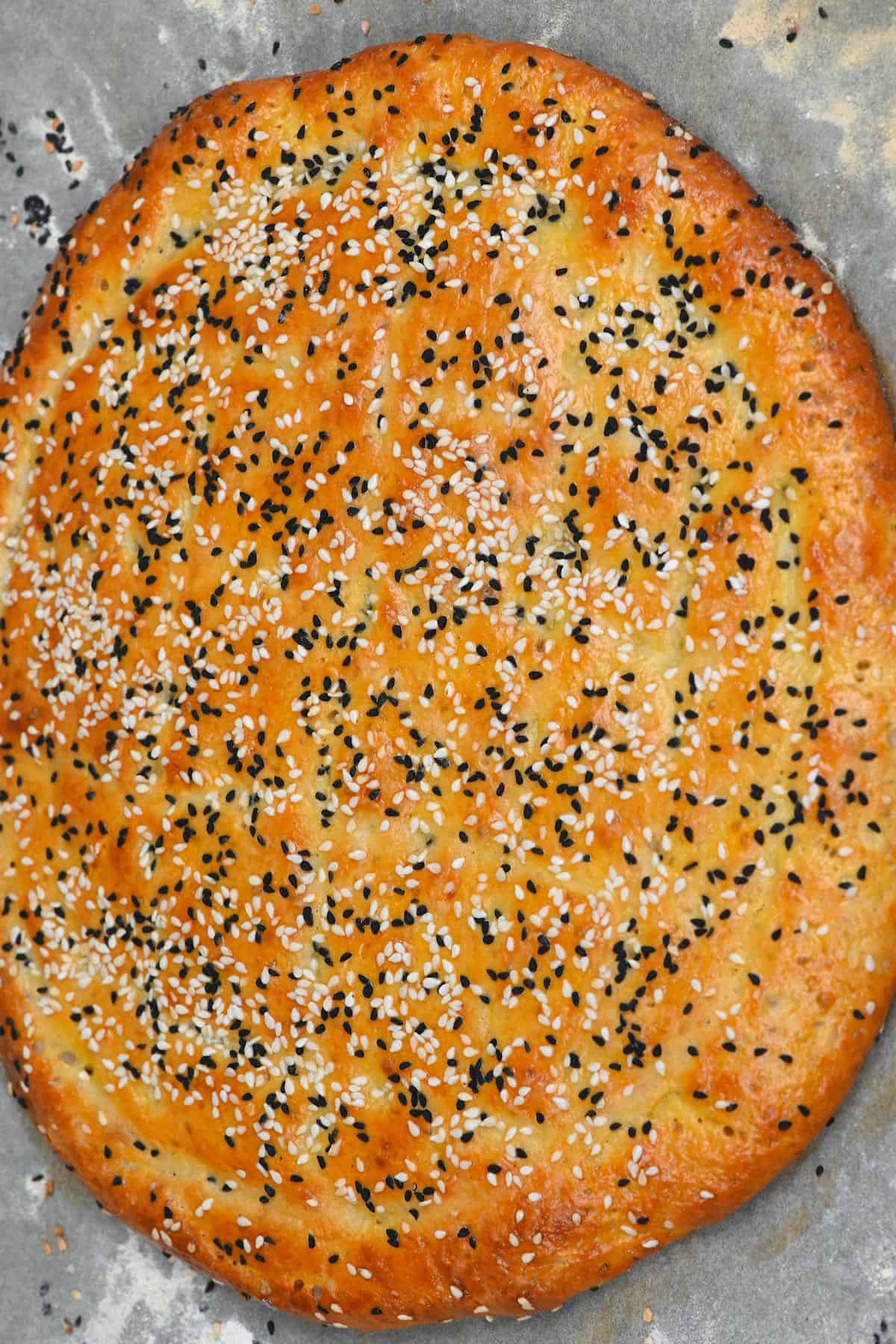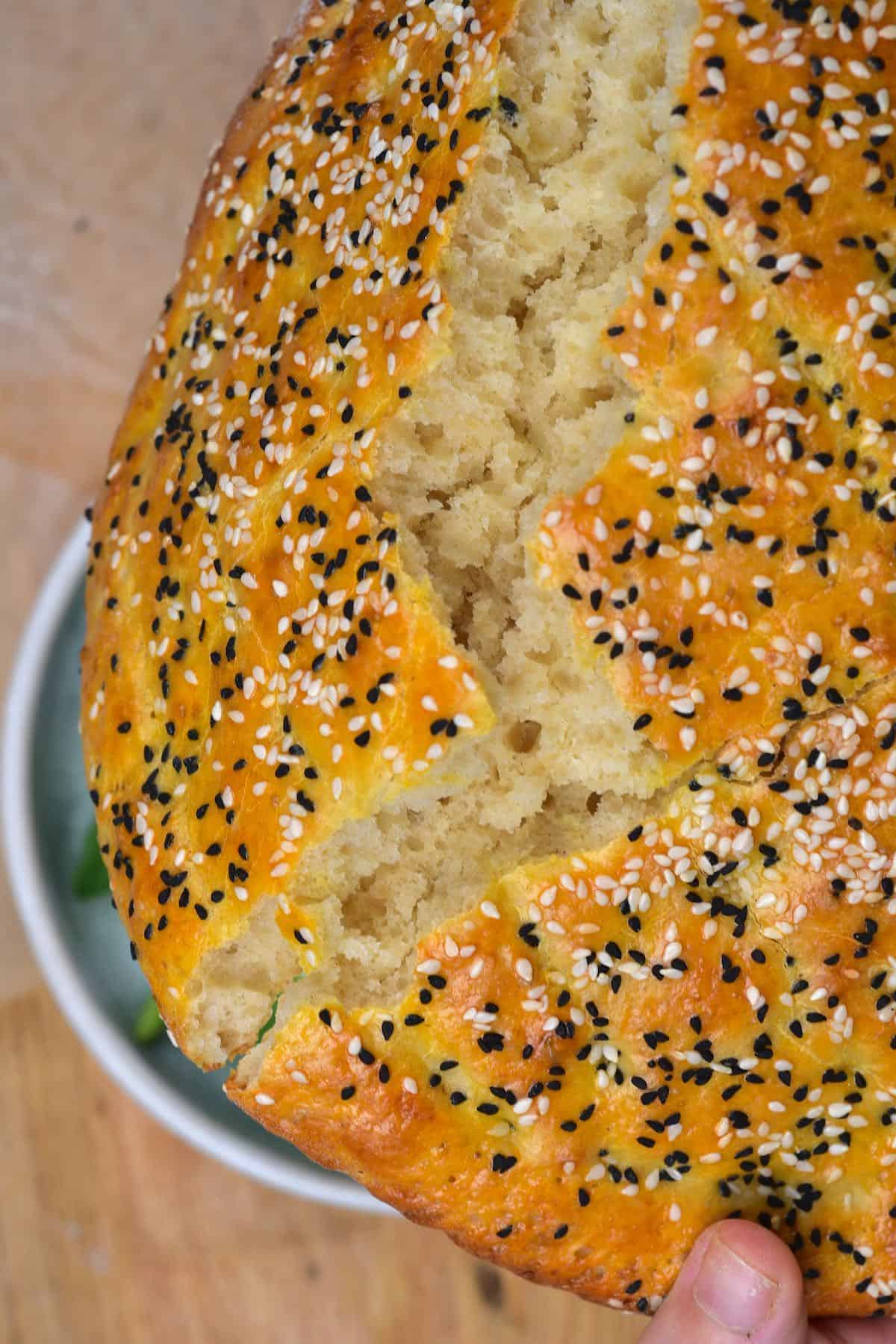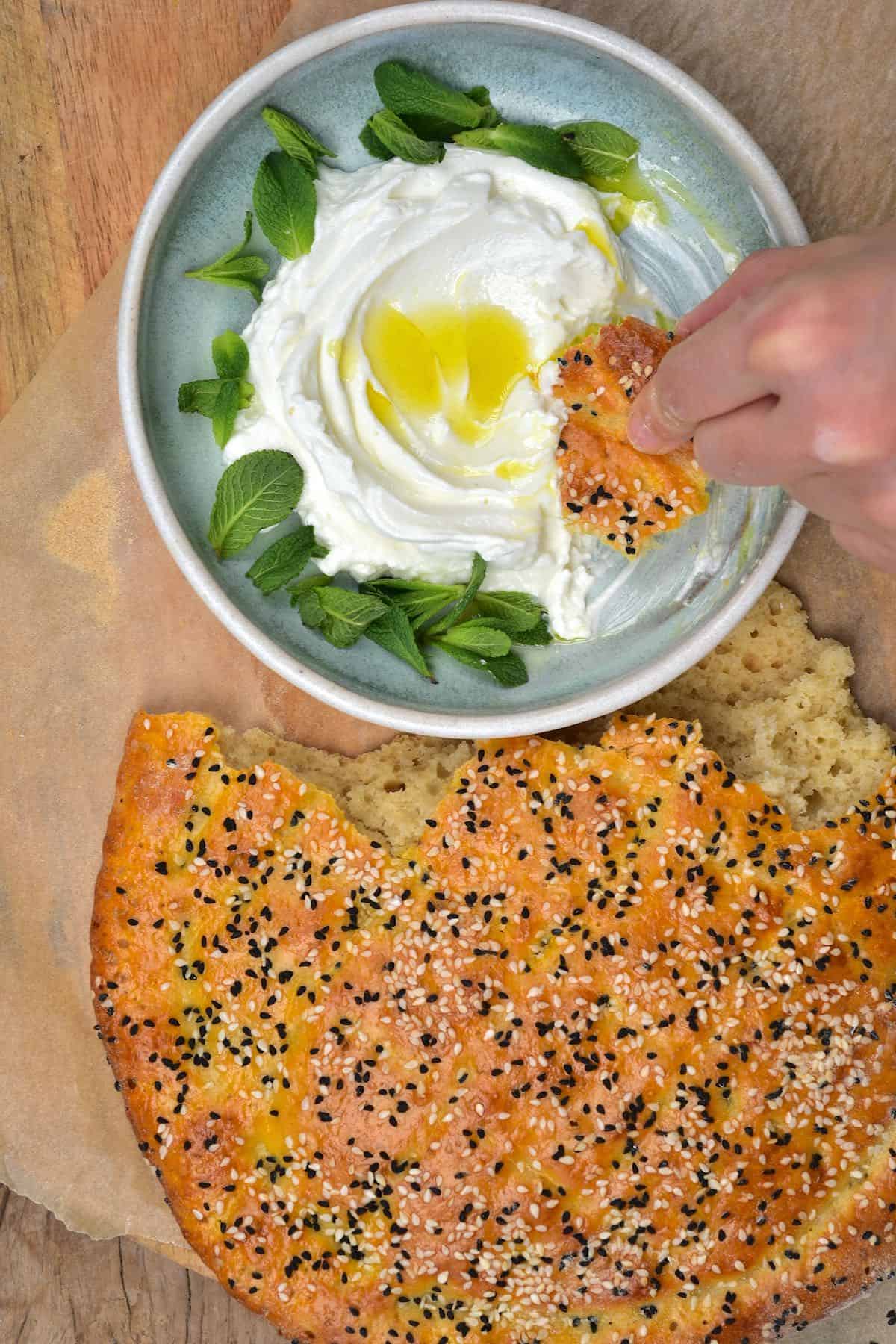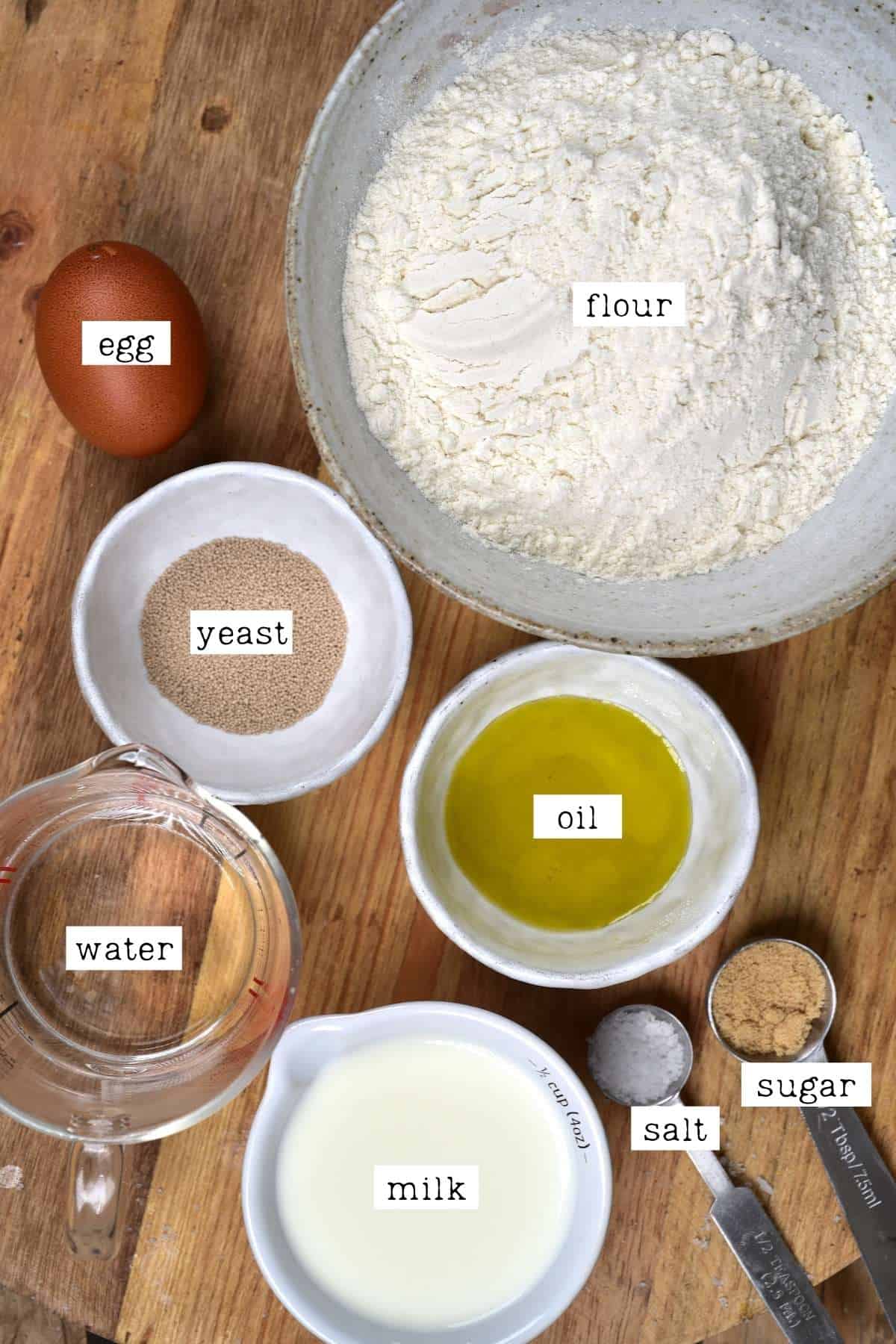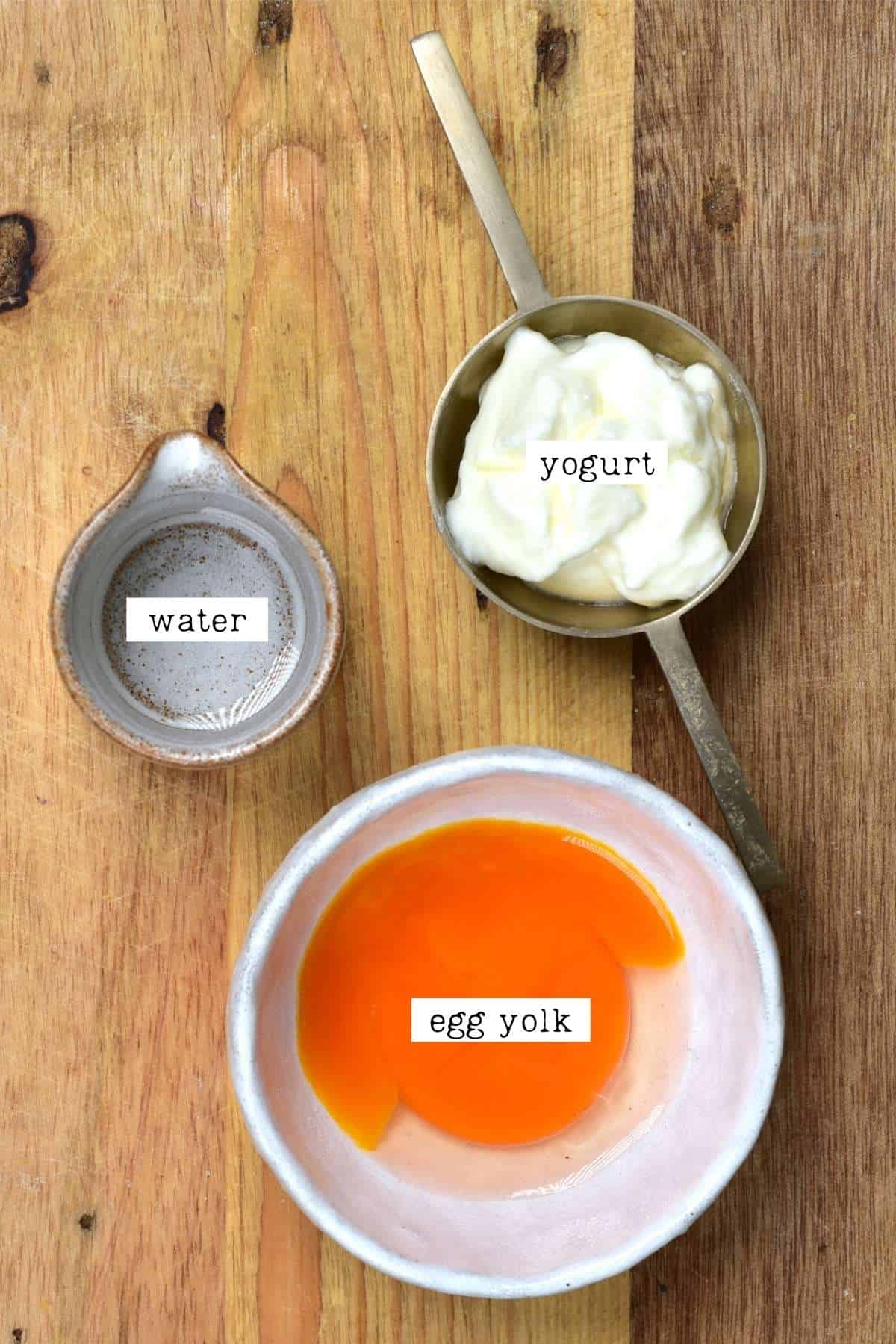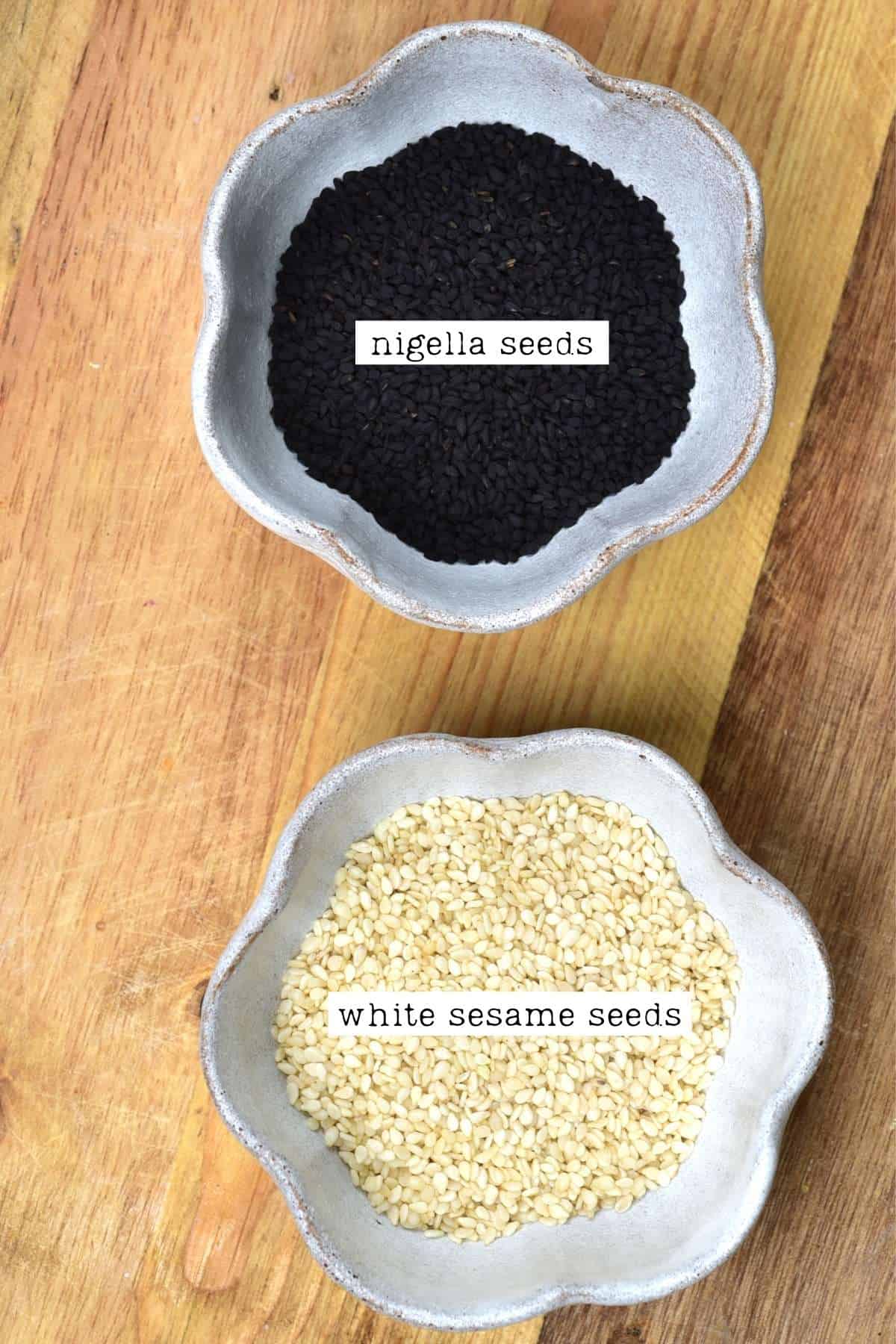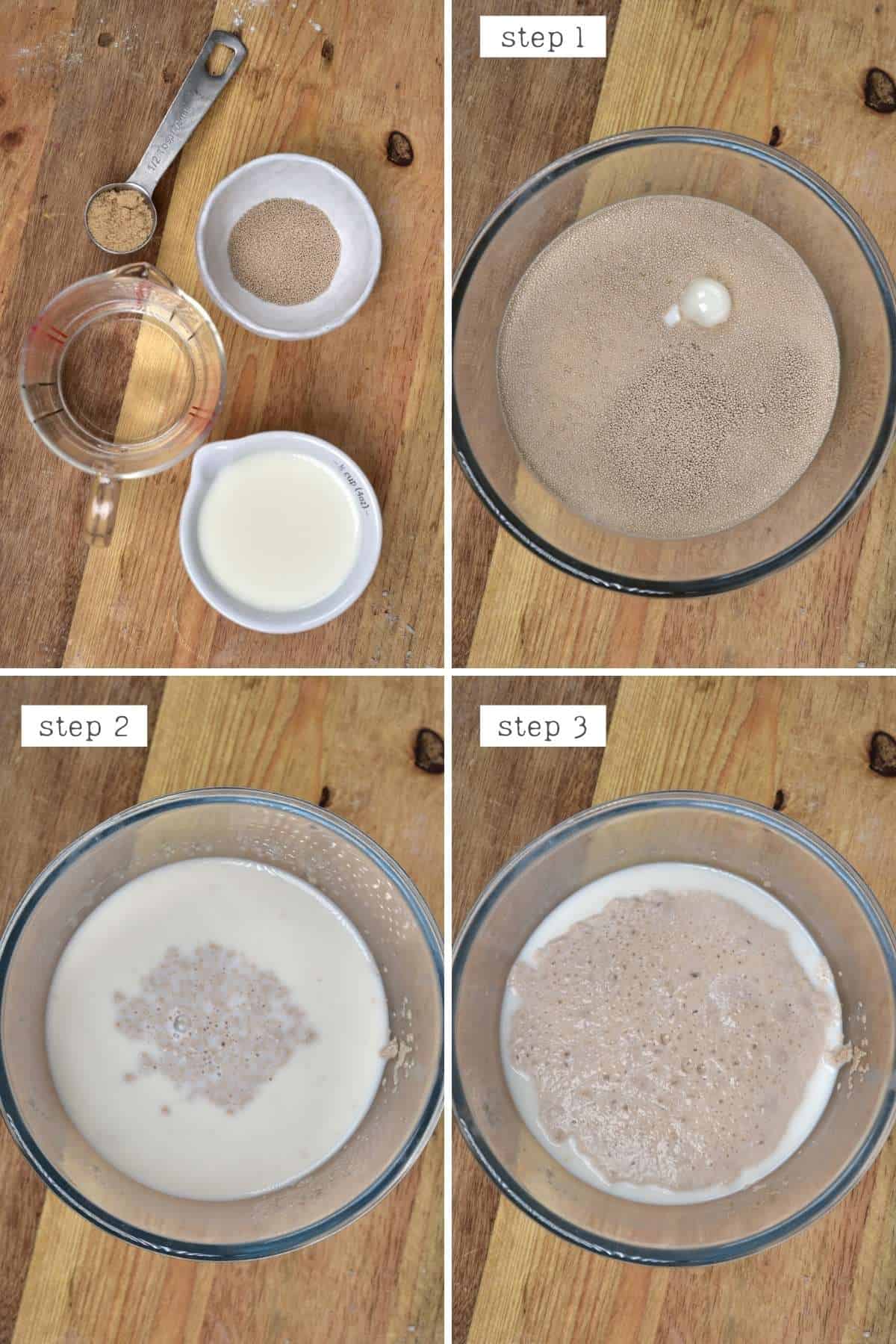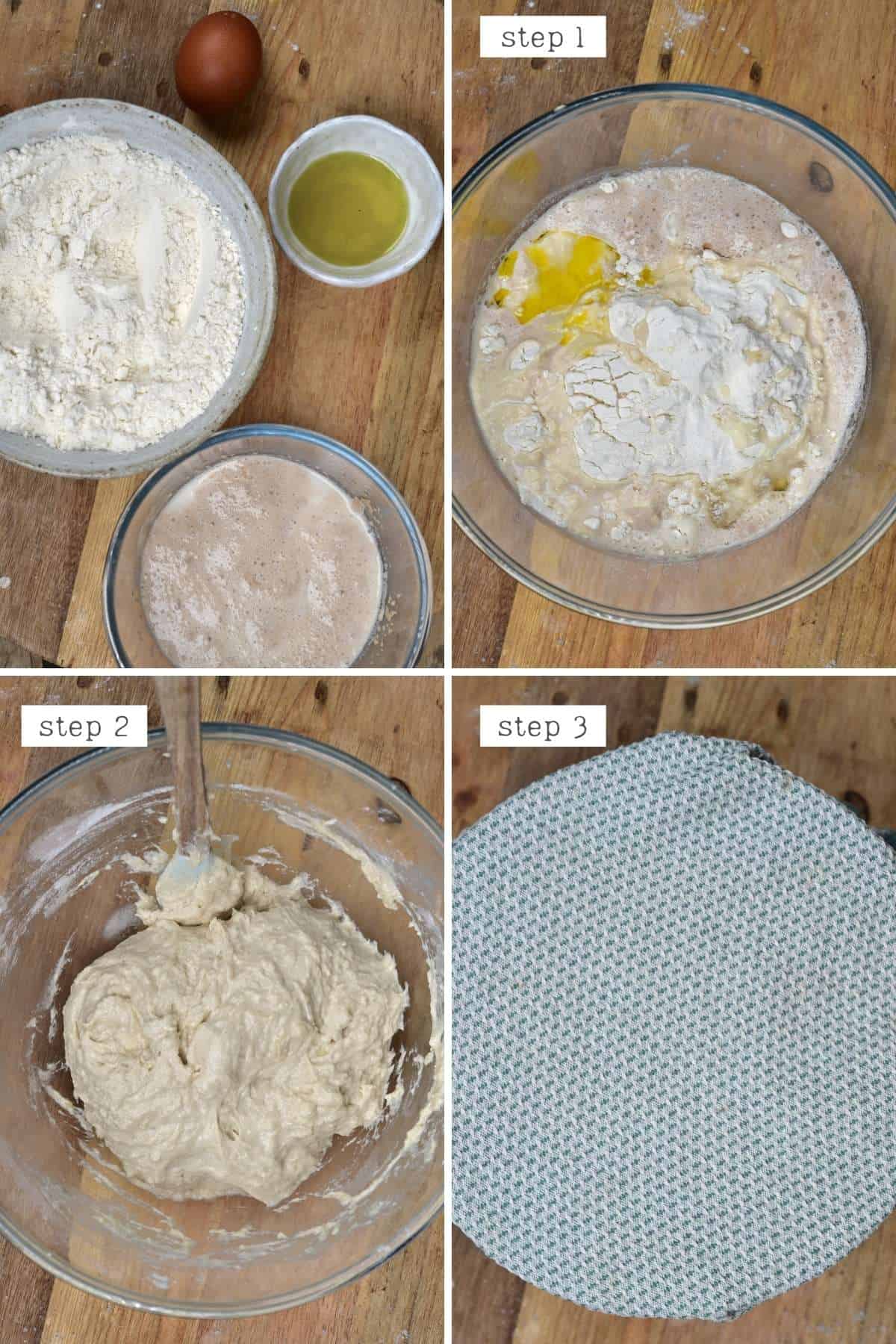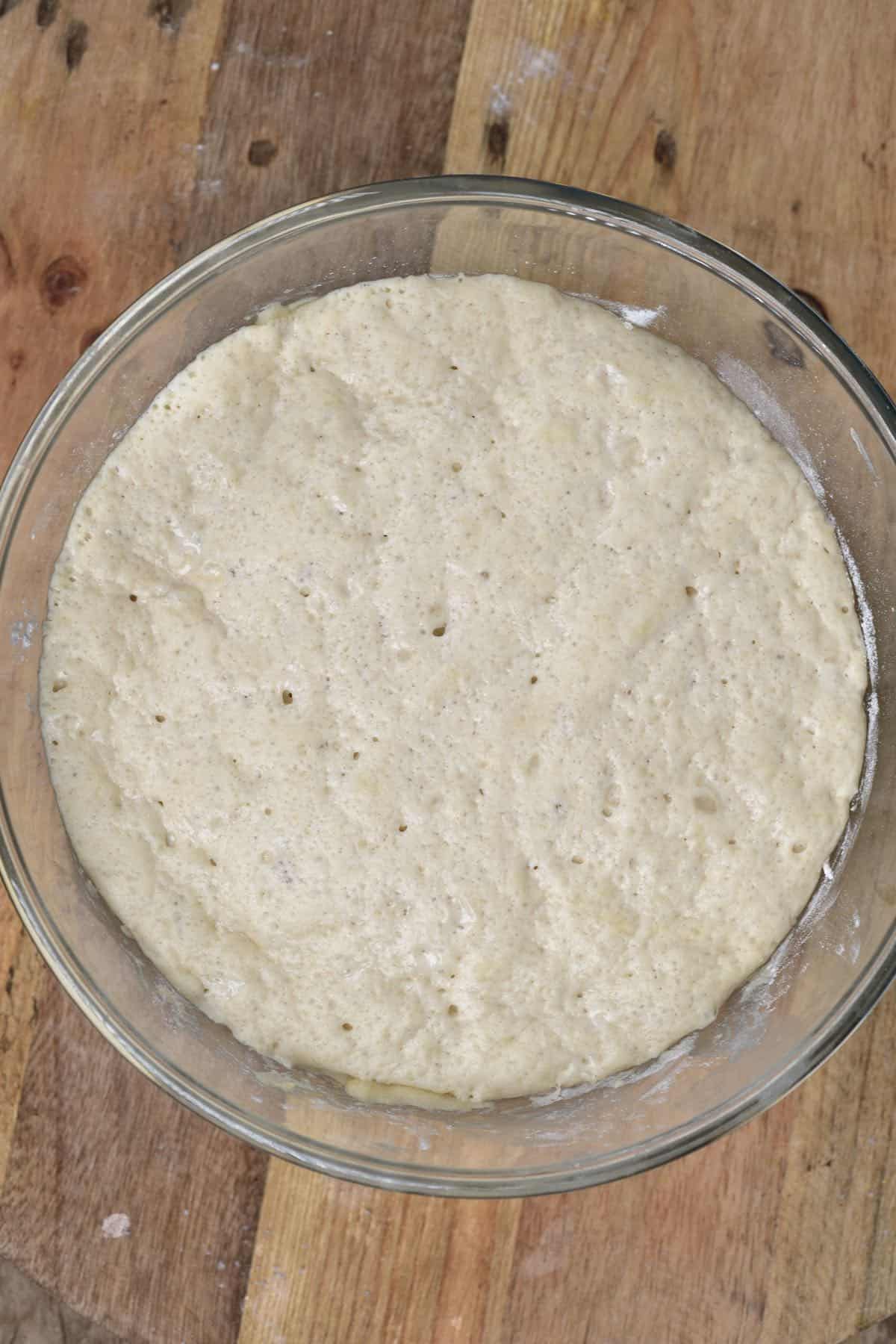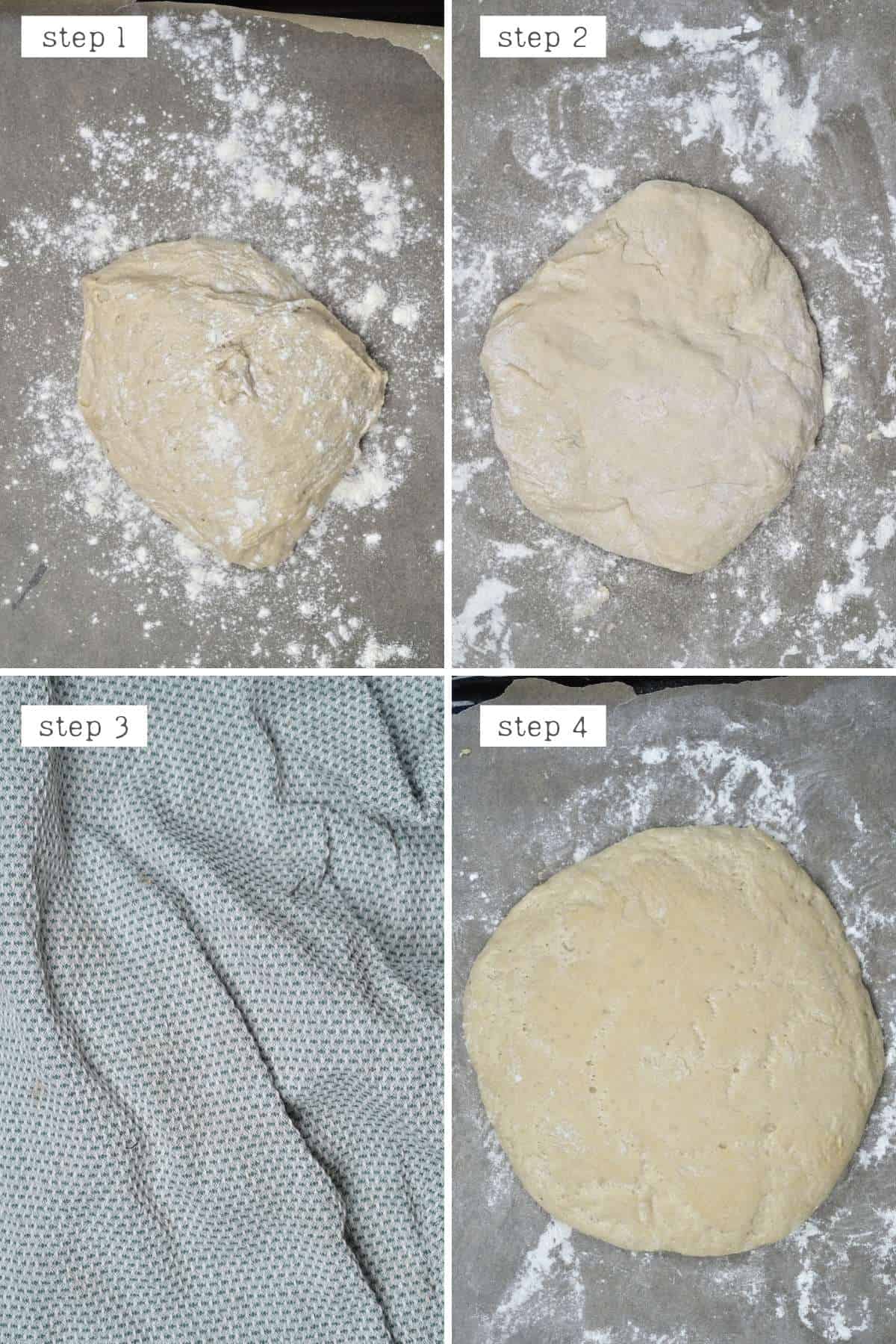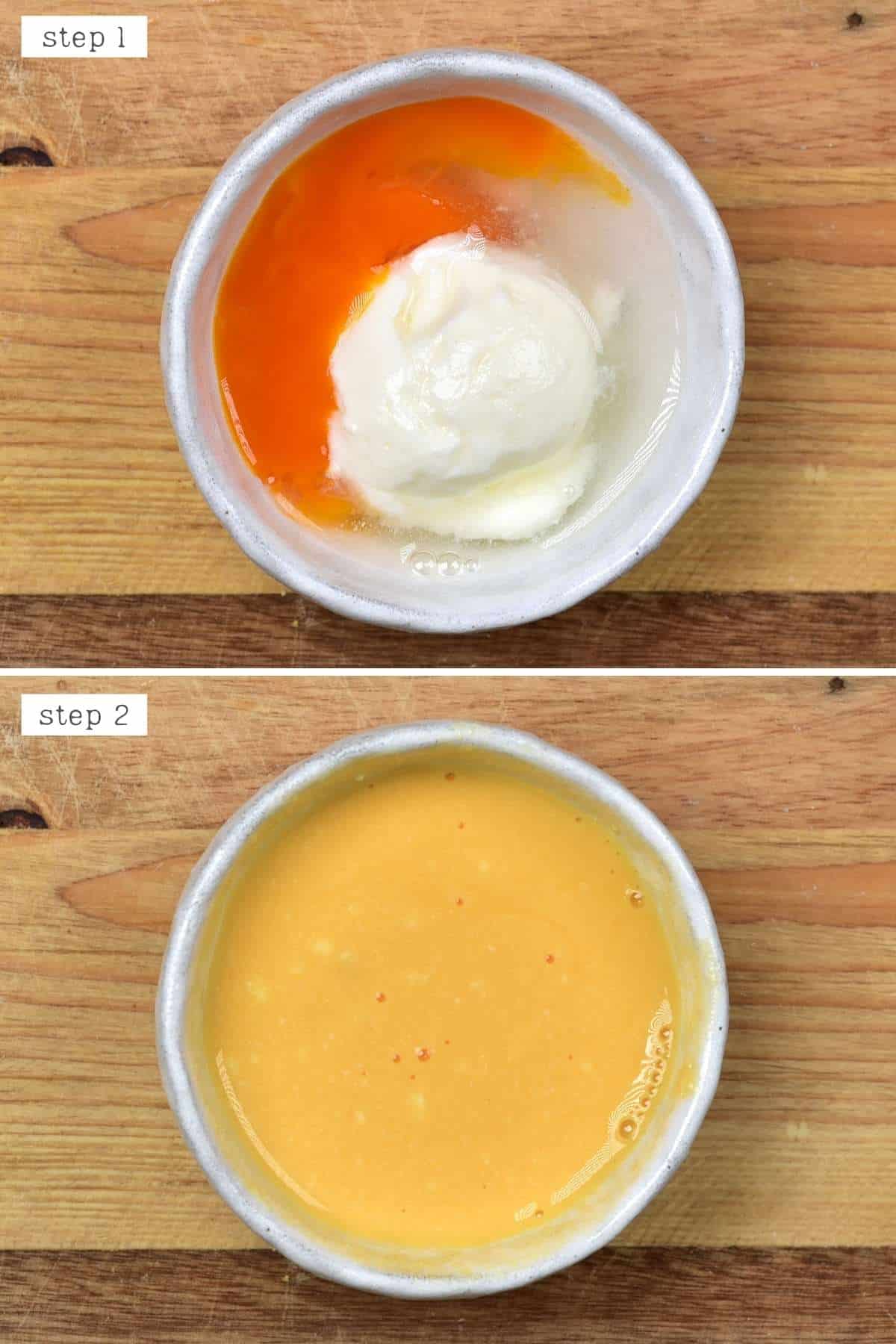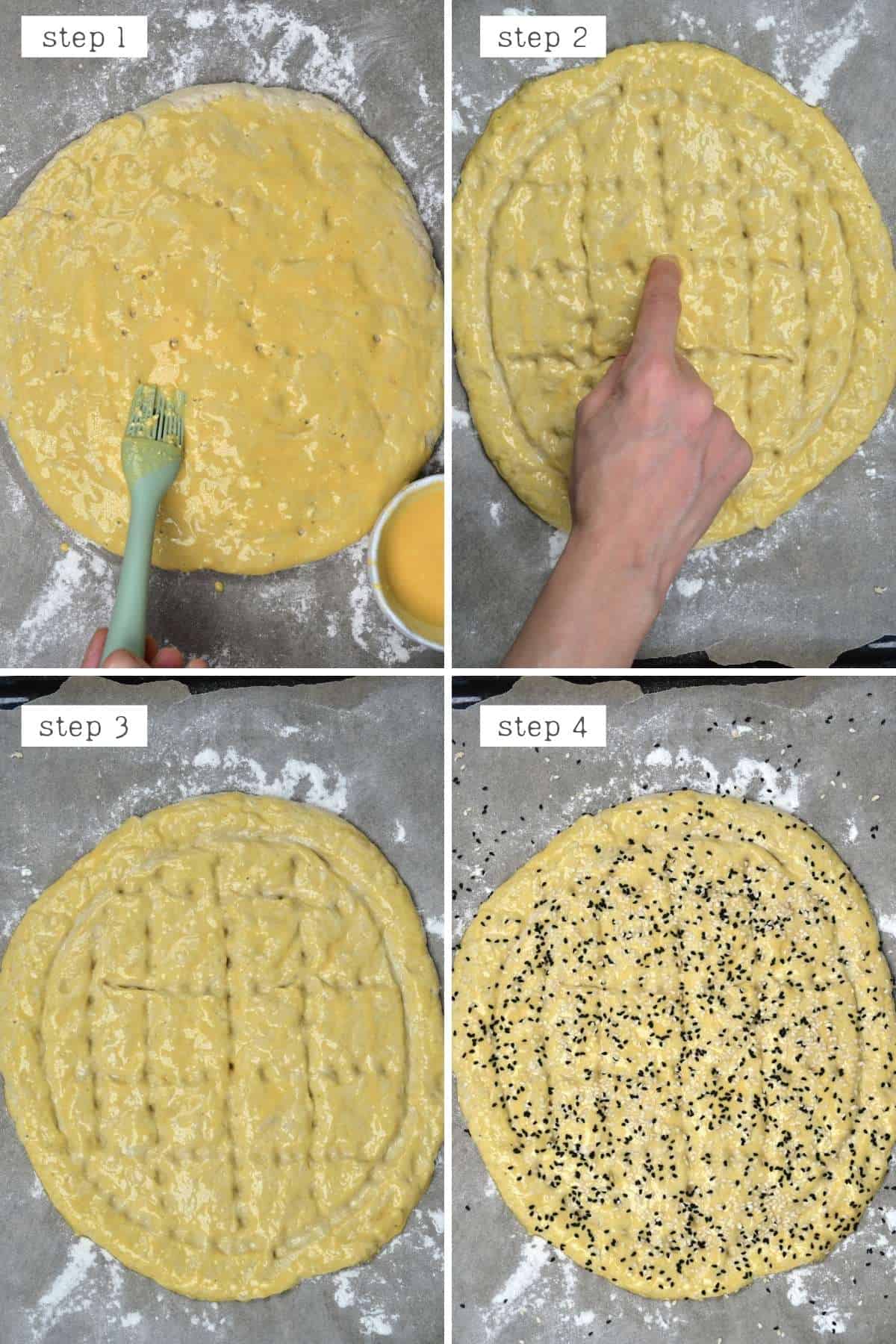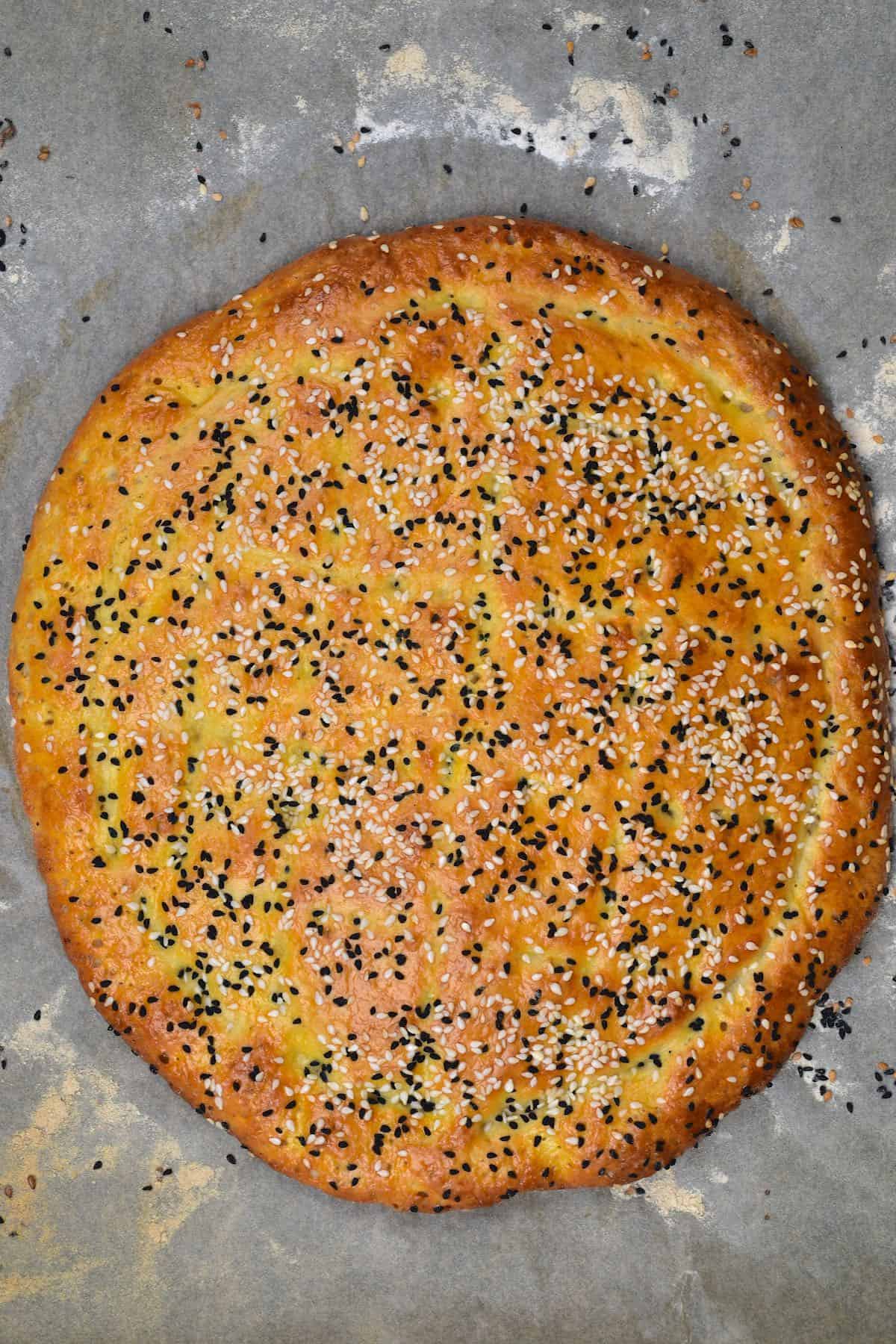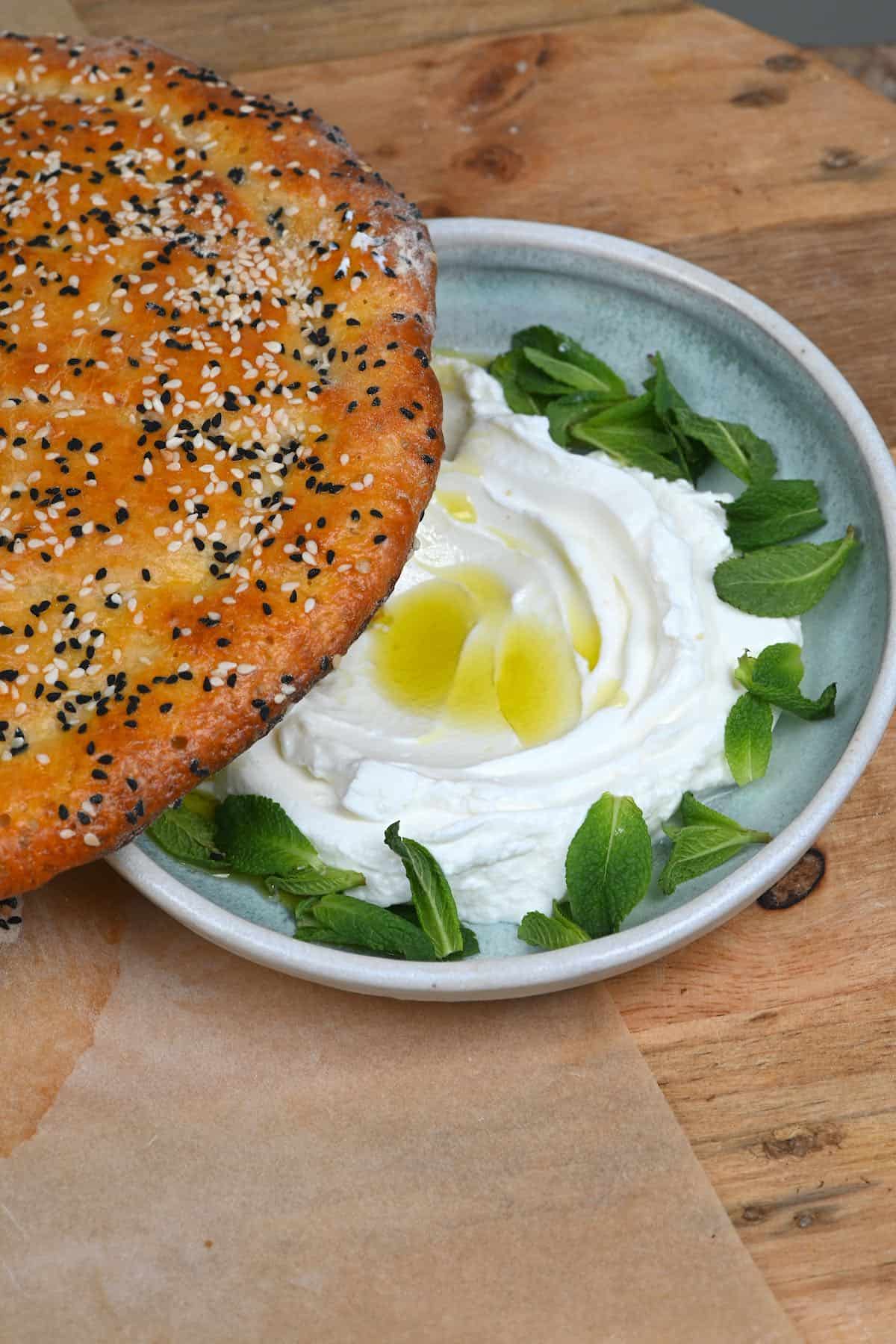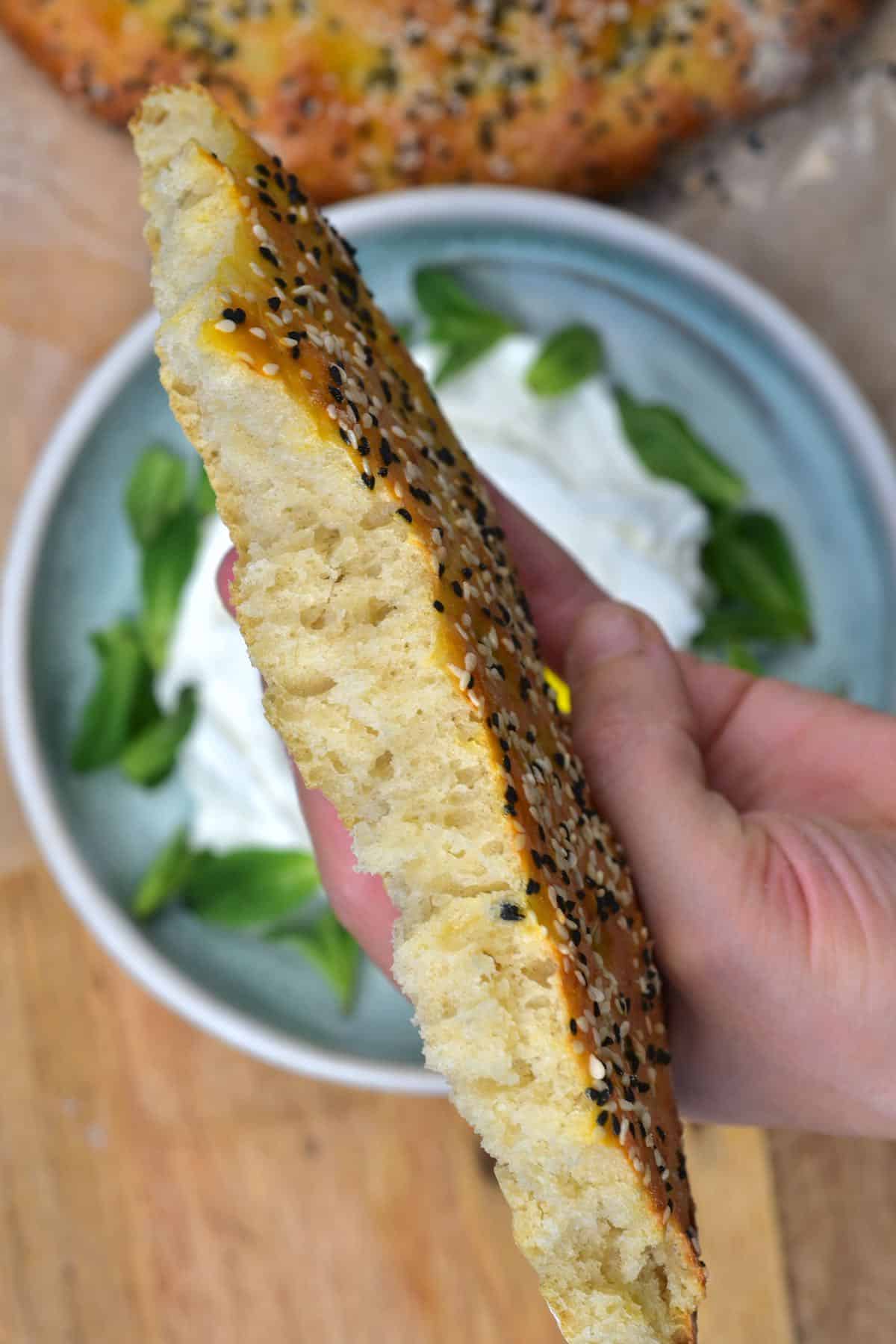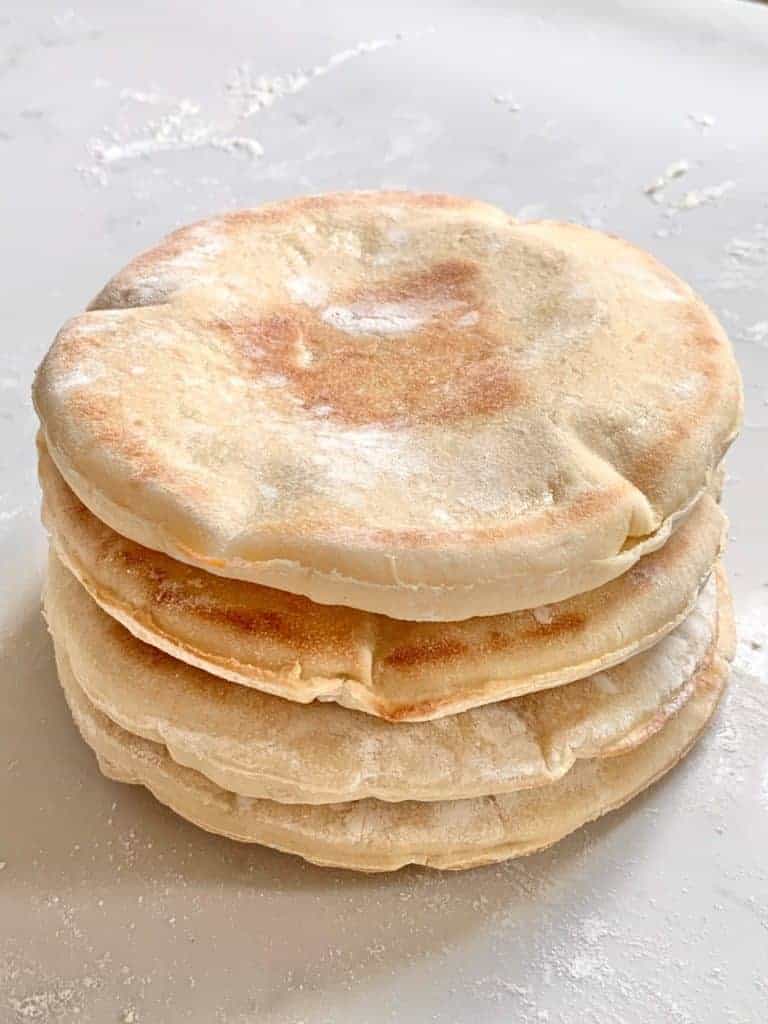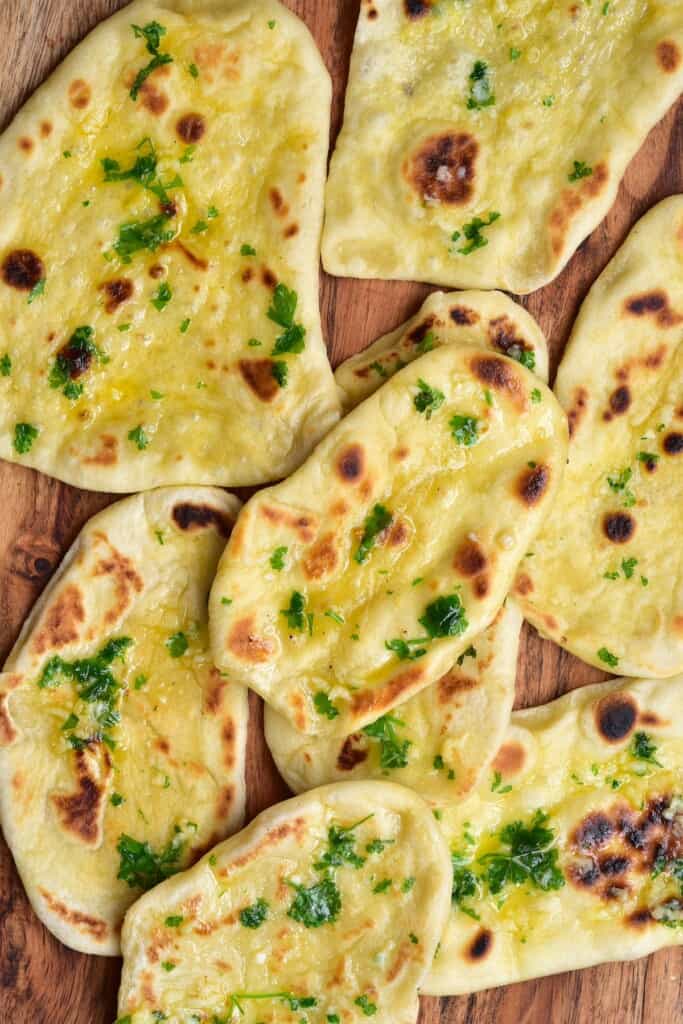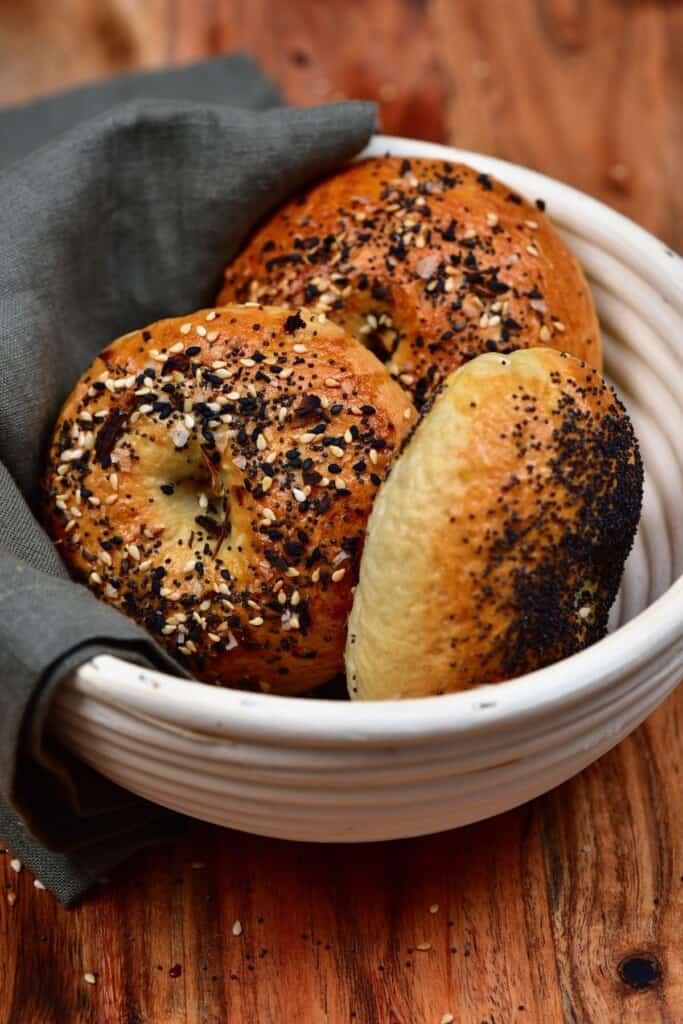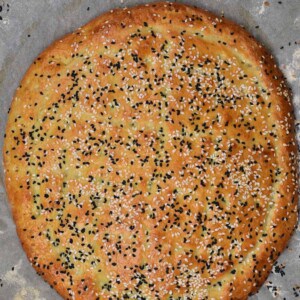This past year, I’ve shared recipes for several types of easy flatbread, including pita and naan. Now, it’s the turn of this super simple, no-knead Turkish bread (pide bread). Turkish pide bread is similar to naan, as a thicker, fluffy bread rather than the thinner ‘pocketed’ variety like pita bread. However, unlike naan bread, this easy no-knead bread takes away the kneading step, meaning it only requires just minutes of simple hands-on prep. Plus, this Turkish bread is oven-baked, rather than done over a hot plate/skillet. There are several types of Turkish flatbread options: lahmacun, bazlama, gozleme, yufka, pide, etc. However, this no-knead pide bread is probably one of my favorites to prepare. All you need is just one bowl, a few simple ingredients, and within no time, you’re baking a fragrant, tender, fluffy homemade Turkish bread.
What Is Pide?
Traditionally, pide is a type of Turkish pizza, shaped like a boat, topped, and baked in a traditional stone oven. However, this version is slightly different and referred to as ‘Ramadan pide’ bread (Ramazan pidesi), served during the month of Ramadan in the morning and to break the fast at the end of the day. While it uses a similar method and ingredients to Pide pizza, it is left plain – often just sprinkled with some sesame and nigella seeds and served alongside mezze and other foods. It’s the perfect dipping and ‘mopping’ bread. Plus, this recipe is also so simple as it’s for no-knead pide, and there’s no need to go hunting for a stone oven – the oven you already have is more than capable of yielding delicious, fluffy, flat Turkish bread. Also, when making this Turkish Ramadan pide bread a home, you can enjoy it at any time of the year – and you’ll want to!
The Ingredients
White flour: you could also use bread flour or a combination of wholemeal and white but only use 50% wholemeal at the most, or the pide bread will become dense. Olive oil and egg white: just a little bit helps to improve the texture of the bread.Milk: use warm milk; this helps to yield a softer pide bread. Sugar: not much is needed, but this will help to activate the yeast and shouldn’t be omitted.Dry yeast: I used active dry yeast. If you want to use ‘instant,’ then reduce the amount by 25%Yogurt & egg (yolk): the two are combined and brushed over the unbaked Turkish flatbread, to bake into a deliciously golden color. Water: warm water is used to help activate the yeast.Topping: nigella seeds and white sesame seeds. You can experiment with this to personal taste. I’ve added za’atar before with wonderful results.
For dairy-free, egg-free pide: use your choice of dairy-free milk and omit the egg yolk and yogurt wash; instead, use a little olive oil. The bread won’t become golden but should still take on a little color.
How To Make Turkish Bread (Pide Bread)
This Turkish pide bread recipe is super simple and made up of just 5 steps, so let’s jump right in.
Step 1: Prepare the yeast
Combine the warm water, milk, sugar, and dry yeast in a bowl, mix, and set aside for 5-10 minutes to activate the yeast.
Step 2: Mix the pide Turkish dough and prove it
In a large bowl, combine the sifted flour and salt. Then add the yeast mixture, oil, and egg white and mix well to obtain a fairly wet, sticky dough. Cover the bowl with a kitchen towel and move to a warm area to rise for 30-40 minutes. During this time, the dough should double in size – you may need longer depending on the weather and several other factors.
Step 3: The second prove
Prepare a baking tray with parchment paper and a dusting of flour, then turn the dough out onto it. Shape it into a circular shape without knocking too much air out of it. Cover with the kitchen towel again and rest for a further 20 minutes.
Step 4: Shape the Turkish bread
Prepare the egg wash by combining the egg yolk and yogurt with a teaspoon of water and whisking well. Once rested, brush the dough with the egg wash and then make a pattern on the dough with your fingers (refer to picture). The easiest way to do this is first to use a finger to draw a rough circle shape about 1-inch in from the edge of the dough. Then poke vertical and horizontal (or diagonal both ways) lines (crisscrossed) within that circle, like a grid. Then, sprinkle the dough with some nigella seeds and white sesame seeds.
Step 5: Bake the pide bread
Bake the pide in the oven for around 20 minutes at 400ºF/200ºC. It should be a deep golden color.
How To Serve
There are so many ways to enjoy this Turkish flatbread: as part of a mezze platter, with sauce-y dishes like stews, and alongside breakfast.
I love to eat mine with a bit of labneh and some mint. Other dips: this flat Turkish bread is perfect for dipping: hummus, baba ganoush, Gluten-free Muhammara Dip (Roasted Red Pepper Dip), or Spinach Yogurt Dip (Borani)Serve alongside morning eggs, like traditional Turkish eggs or this Healthy Easy Shakshuka.As part of a breakfast spread: with cheese, butter, labneh, jam, honey, etc. Adapt into a pizza by only using the egg wash on the edges of the pide bread and topping the center with your toppings of choice. Alternatively, top the baked no-knead bread and place it back in the oven for a few minutes to ‘melt’/heat the toppings.
When your homemade Turkish bread starts to get a little old (2 days after baking), I like to slice it into strips and lightly toast it then serve with my favorite dips.
To Make Ahead, Store and Reheat
To make ahead: this isn’t a method I’ve tried yet with this pide bread. However, I’ve done this with similar flatbread recipes, so it should work. Do the second proof in the fridge, covered. The cold temperature will slow down the proofing so that it takes 4-6 hours (at least). However, the bread can be kept there for up to a day (24hrs), proofing before baking. Store: the leftover Turkish flatbread can be kept covered at room temperature for 2 days or in the fridge for between 5-7 days. Freeze: freeze the leftover pieces tightly wrapped or in an airtight container for up to two months. Reheat: to reheat the bread, sprinkle it with a little water and heat it in the oven until warmed through (usually just a few minutes at 350ºF/180ºC).
Recipe Notes
The proofing (rising) time can vary based on several factors, including the temperature, so you may need to adjust the times accordingly.You could adapt this recipe to create smaller Turkish flatbread rather than one large one but the baking time will be reduced.To keep the freshly baked pide bread soft, place a dry kitchen towel oven it fresh from the oven.To use instant yeast in place of active dry yeast, it’s best to use 25% less.To mimic stone-baked Turkish bread: omit the eggwash in place of a light brushing of olive oil. Preheat the oven to its highest temperature (for me, that’s 570ºF/300ºC) with a baking stone/pizza stone inside. Once hot, transfer your shaped Turkish flatbread quickly onto the stone and bake in the oven for just between 5-8 minutes until it begins to take on some color.
Related Bread Recipes
If you like this Turkish bread recipe, then you might like some of the other bread recipes that I have on the blog.
The Best Authentic Homemade Pita BreadHow To Make Simit (Turkish Bagel)Homemade Garlic Naan Bread (Indian Flatbread)Homemade New York-Style Bagels (NY Bagel Recipe)How To Make Soft PretzelsDinner Roll Baked Camembert Wreath (Pull-Apart Dough Balls)How to make Whole Wheat Bread at homeChristmas Tree Pull-Apart Bread (Cheese Buns)Sourdough Cheesy Pull-Apart Bread (‘Crack’ Bread)Homemade Breadcrumbs (Fresh, Dried, and Italian Breadcrumbs)Turmeric Rosemary No-Knead Focaccia BreadEasy No-Knead Dutch Oven Bread (Crusty Bread)
You might also like to check out this post with 25+ breakfast ideas from around the world! If you try this Turkish bread recipe (Ramadan pide bread), then let me know your thoughts and questions in the comments. I’d also really appreciate a recipe rating and would love to see your recreations – just tag @AlphaFoodie.


